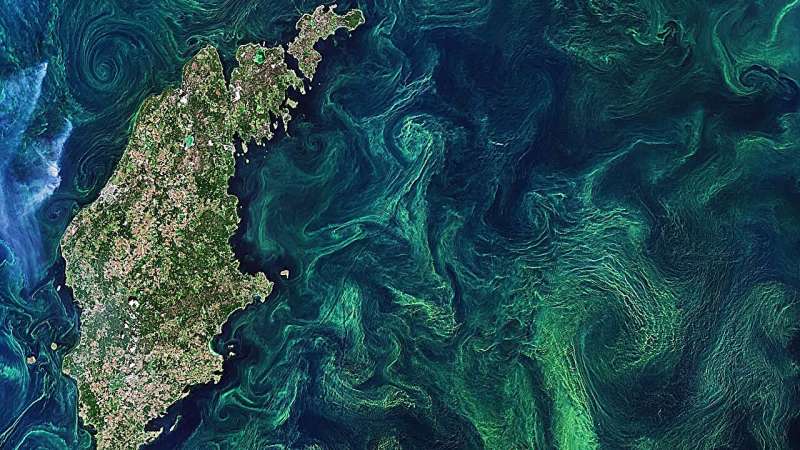
September 10, 2024 by Saima May Sidik, American Geophysical Union
Collected at: https://phys.org/news/2024-09-shallow-carbon.html
Marine phytoplankton take up atmospheric carbon and carry it to the seafloor when they die and sink (a process known as organic carbon sedimentation). This biological carbon pump is a powerful part of Earth’s carbon cycle, yet scientists don’t have a complete picture of marine organic carbon sedimentation rates.
In a paper published in the journal AGU Advances, Tegler and colleagues recently compiled such rates in continental margin areas to help arrive at a global picture of marine carbon transport to the seafloor.
Many studies have made inferences about the pump based on surface water conditions, for example, by using satellite images to estimate the abundance of chlorophyll, a pigment present in phytoplankton that allows plants to harvest energy from sunlight. In the new study, researchers instead focused on estimates obtained through geochemical analyses of ocean sediments. Such estimates are harder to obtain but offer a more direct way of measuring carbon sedimentation.
The vast majority of organic matter that falls to the ocean floor (about 92%) does so in marginal regions near continents, their analysis revealed. Oxygen helps microbes break down organic matter, so some researchers have speculated that organic matter is more likely to remain intact—and therefore to fall to the ocean floor and be buried—in areas with low oxygen content.
However, a recent study suggests that less than 4% of global organic carbon sedimentation happens in areas with low bottom water oxygen levels, perhaps because of the presence of other chemicals that help break down organic matter.
The abundance of chlorophyll on the ocean surface also did not appear to correlate with organic matter sedimentation rates, a counterintuitive finding considering that when phytoplankton are more abundant, more should sink and become buried in sediment. Measuring phytoplankton prevalence is challenging, however, and the authors write that further study of the relation between phytoplankton abundance and sedimentation rates is necessary.
The factor most influential on carbon sedimentation in marginal ocean areas, according to the research, appears to be water depth, with shallow depths correlating with the highest carbon sedimentation rates. The researchers note that organic matter simply doesn’t have as much time to break down when transiting through shallower water, allowing more of it to reach the ocean floor.
More information: Logan A. Tegler et al, Distribution and Drivers of Organic Carbon Sedimentation Along the Continental Margins, AGU Advances (2024). DOI: 10.1029/2023AV001000
Journal information: AGU Advances

Leave a Reply